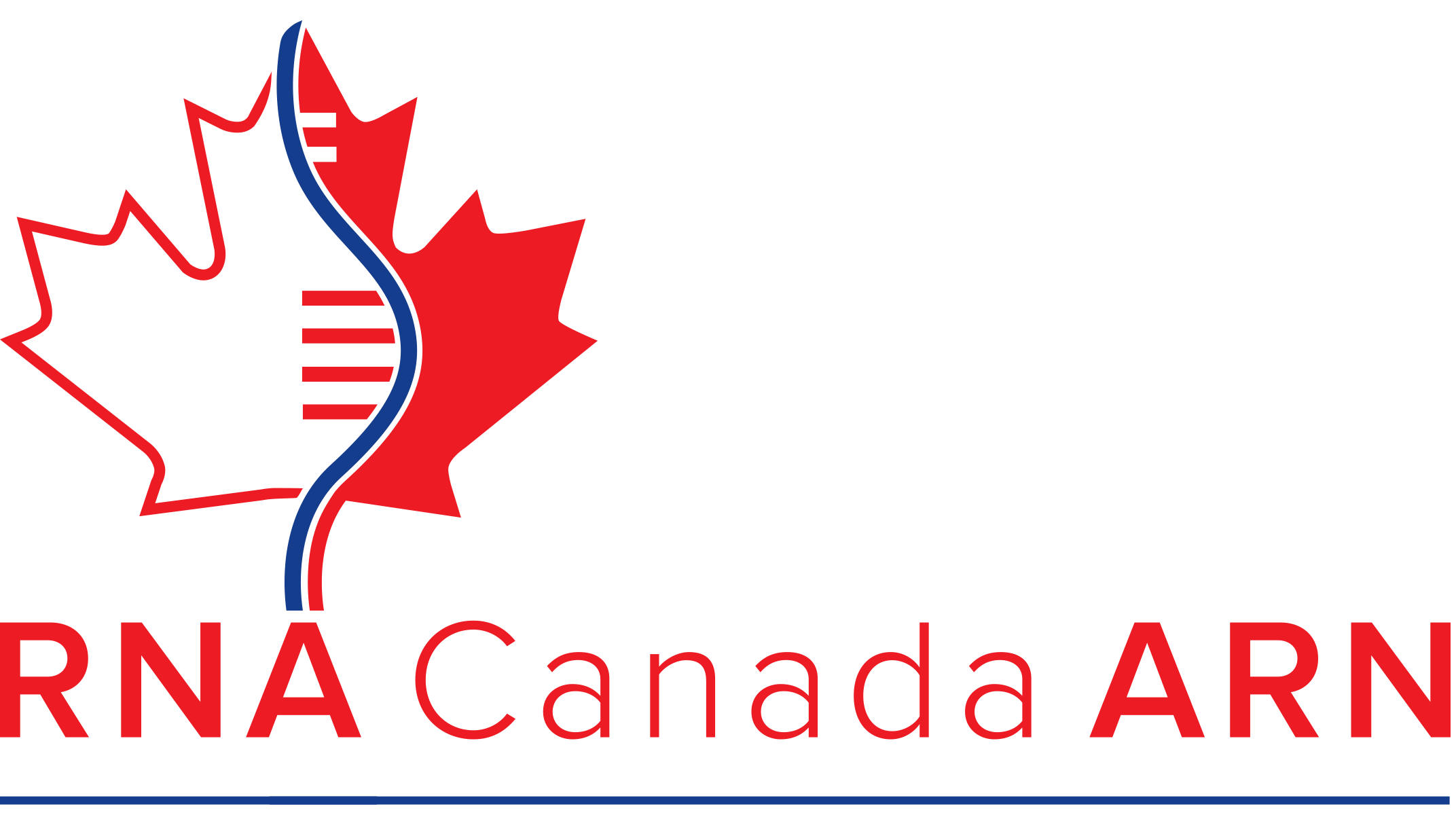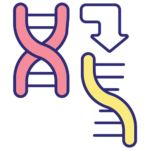Want to learn more about the fundamentals of RNA in biology?
Start here!
This page provides some information about the roles of RNA in our cells, and applications of RNA. Check out the Applications and Economic Impact page for more information on new RNA technologies and how they will shape the future.
How do our cells know
what to do?
The Central Dogma of Molecular Biology Controls the flow of information.
You’ve probably heard about DNA (DeoxyriboNucleic Acid), and know that it is the blueprint or instructions to build all the parts of us (skin, hair, muscle, etc.), which are mostly made of protein. You get half of your DNA from your mom and half from your dad in the form of chromosomes, the units of heredity. Our chromosomes are organized into genes-about 20,000 genes in humans, to be exact-where each gene carries the code for a specific protein. In simpler terms, you can think of DNA as a cherished family cookbook, where each recipe is a gene, and the proteins are the delicious pie or cake the recipes (genes) instruct you to make.
Because DNA is the master plan, our cells take very good care of it and protect it heavily. In fact it is stored inside each cell’s nucleus, while proteins are made out in the cytoplasm of cells. So then, how do we get from DNA (cookbook) to proteins (delicious treats)? The answer lies in RNA (Ribonucleic Acid)! You can think of RNA as the copy of a single recipe, written on a notecard or post-it note, so that you don’t have to haul that big family cookbook everywhere and can keep it safe for generations to come. In this way, RNA serves as a sort of messenger, between the instructions encoded the genes of DNA within the nucleus and the output of protein in the cytoplasm, and this is why we call it mRNA, for messenger RNA.
This “flow of information” where parts of the DNA are copied to RNA (in a process called transcription), and then the RNA is decoded into proteins (in a process called translation) is known as the “Central Dogma” of molecular biology.
So what's the code?
DNA and RNA have similar “alphabets,” but protein is a different language
DNA and RNA are both types of biological molecules known as “nucleic acid.” They are each made of four different building blocks (nucleotides) that make up a code. For DNA, the nucleotides are A (Adenine), T (Thymine), G (Guanine), and C (Cytosine). For RNA, the letters are the same, except RNA uses U (Uracil), instead of T in its code. Another difference in the building blocks of DNA vs. RNA is that different “sugar” molecules are used, but we won’t focus on that part for now. Finally, the DNA that makes up our chromosomes generally exists as a double-helix or double-stranded molecule. This means that two individual chains of DNA interact with each other, where A likes to pair with T and G likes to pair with C in a process called “base pairing.” RNA, on the other hand is more of a solitary molecule, and is generally found in a single stranded state, although RNA is creative and can perform some molecular gymnastics to pair with itself.
Now, what’s the alphabet of proteins? Amino acids! You’ve probably heard of these in the context of food and nutrition. There are 20 essential amino acids and a few others that are used in different combinations to build proteins.
But, how is the language of RNA decoded into protein? Well, there is a “triplet” code, where 3 nucleotides (called a codon) encode for one amino acid . This decoding or “translation” process occurs within the cytoplasm of cells, in a protein-making factory called the Ribosome.
So, is RNA only a messenger?
Now you’ve learned about the Central Dogma, and how DNA the it is the blueprint to make proteins, using RNA as a messenger.
But does RNA do anything else? Being a messenger seems pretty boring.
Well, actually, RNA comes in many other sizes and forms that do different jobs in all our cells, and in fact, most forms of RNA in cells DO NOT build proteins!
For instance, ribosomal and transfer RNAs (rRNA and tRNA) help in the process of making proteins. Ribosomes are the cellular machines or factories made of protein and rRNA that actually build the proteins, and tRNAs are like the secret decoder ring that reads the language of RNA and turns it into proteins! (See why it’s called translation?) Other RNAs help to correctly package the mRNAs in the nucleus in a process called splicing. Yet other RNAs (really small ones called microRNAs) can turn mRNAs on or off, providing fine tuning of when and where proteins are made in the cell. AND, there are many more types of RNA that we don’t have time to talk about here. In the end, our cells would not function without this alphabet soup of RNA molecules.
How do RNA vaccines work?
COVID-19 vaccines have put RNA in the spotlight, but how do they work?
You’ve probably heard a lot about the COVID-19 mRNA vaccines. These vaccines were a revolutionary RNA technology and opened the door to using RNA vaccines for many types of infectious diseases (in humans and in livestock) as well as cancer. So how does this work? Well, a piece of mRNA (yellow) encoding a protein that we want our bodies to raise an immune response against is introduced into our bodies, carried in a tiny protective case or shell called a “nanoparticle.” The nanoparticle fuses to our cells, delivering the mRNA to the inside of our cells, where our own cellular machinery (ribosomes! tRNAs!) will make the protein encoded by the mRNA. From there, the protein is shipped outside of the cells, and our immune system recognizes it as a “foreign” protein, which sets off alarm bells. This causes the body to generate antibodies and immune cells that remember the foreign protein and attack it if the protein is ever encountered again. Amazing, right?

DID YOU KNOW…
To learn more about RNA and its uses,
check out these resources by RNA Canada ARN Scientists!
RNA Canada ARN Scientists strive to make RNA science more available and accessible to the public. Check back often for more content!
A fun and informative RNA-focused Podcast by University of Toronto PhD Students and RNA Canada ARN members, Pallavi Pilaka and Sanjana Bhatnagar. And their website can be found here.
A dynamic webinar in collaboration with the Royal Canadian Institute of Science by RNA Canada ARN member Dr. Julie Claycomb and colleagues Dr. Cei Abreu-Goodger and Dr. Amy Buck covering the basics of RNA and its uses in medicine and agriculture.
A clear walk through how proteins are made, from transcription to the implications of malfunctioning proteins in our bodies, told by RNA Canada ARN International Scientific Advisory Committee member and legendary RNA biologist, Dr. Nahum Sonenberg.
TEDTalk by Dr. Melissa Moore of Moderna about the potential of RNA to revolutionize medicine.






![AdobeStock_532961338 [Converted]jc](https://www.rnacanada.ca/wp-content/uploads/2023/08/AdobeStock_532961338-Convertedjc.webp)




